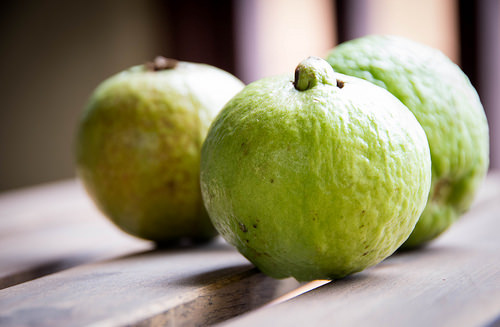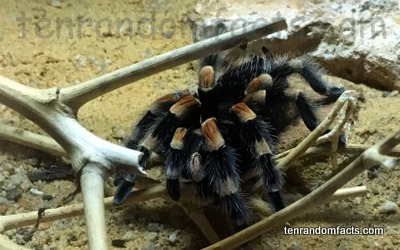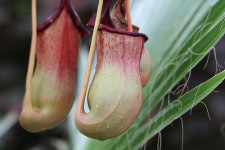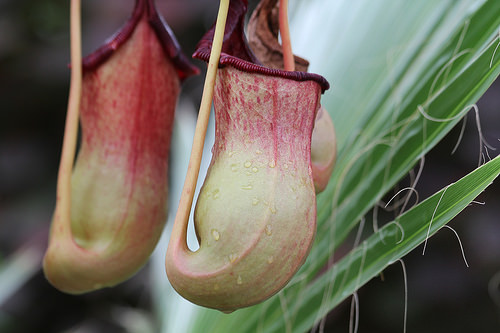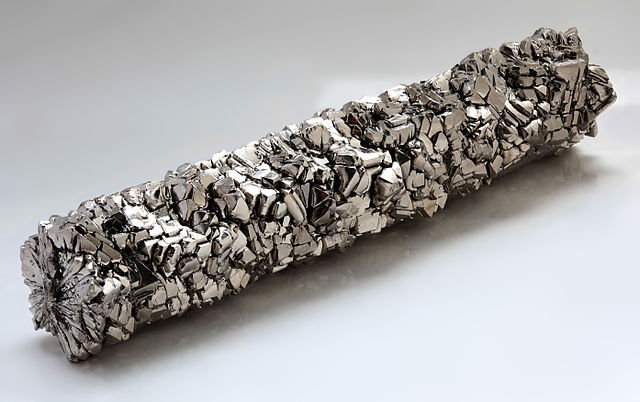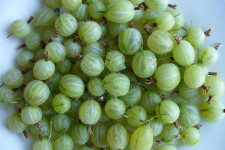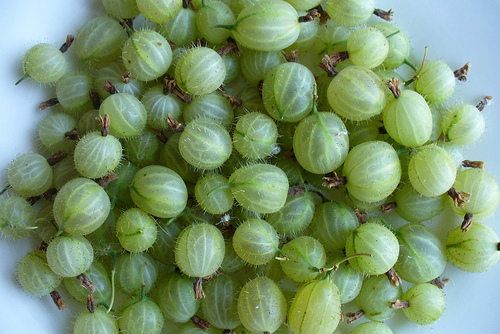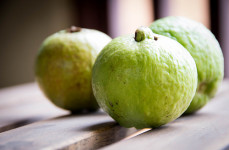
Sweet or sour, guavas are versatile.
- Guavas are a variety of fruit originating from Central America’s tropics, and they are now grown in various tropical islands and regions in America, Asia and Africa, while in 2011, India produced the most guavas in the world.
- The most commonly grown species of guava plant has the scientific name Psidium guajava and it is from the family Myrtaceae, the family of myrtles, while some other species in the Psidium genus also produce similar, edible fruit.
- The ovoid, pear, or round shaped guava ranges from 2.5 to 15 centimetres (1 to 6 inches) in length or diameter, depending on the species and variety.
- Guava skin can be a green, yellow, cream, or red colour, while the flesh colour may be white, yellow, red or pink.
- Typically gauvas are eaten fresh or slightly spiced, but they are also dried or made into juice, jams, or cooked as part of a dessert.
Guava
Image courtesy of Chetan Kolluri/Flickr
- Around 110 to 535 individual seeds can be found in a single guava, and the skin and seeds are generally edible.
- Guavas commonly have a sweet taste, however, they can also have a sour flavour, depending on the variety or species, and they often have a strong sweet and/or musky odour.
- The guava tree can grow to heights of 1.8 to 7.6 metres (6 to 25 feet) or more, and they can bear two crops of fruit in a year.
- Water makes up to approximately 80% of the content of guavas, making it a great means of hydration.
- Guavas are extremely high in vitamin C and are a good source of fibre, vitamin A, potassium, folate and copper.
Bibliography:
Ahuja A, 15 Amazing Guava Benefits: Heart Healthy, Weight Loss Friendly and More, 2015, NDTV Convergence Limited, http://food.ndtv.com/health/15-amazing-guava-benefits-heart-healthy-weight-loss-friendly-and-more-1244242
Grant B, Guava Plants; How to Grow and Care for Guava Fruit Trees, 2016, Gardening, http://www.gardeningknowhow.com/edible/fruits/guava/growing-guava-fruit-trees.htm
Guava, 2016, Wikipedia, https://en.wikipedia.org/wiki/Guava
Tropical Guava, 1996, California Rare Fruit Growers, Inc, https://www.crfg.org/pubs/ff/guava.html





